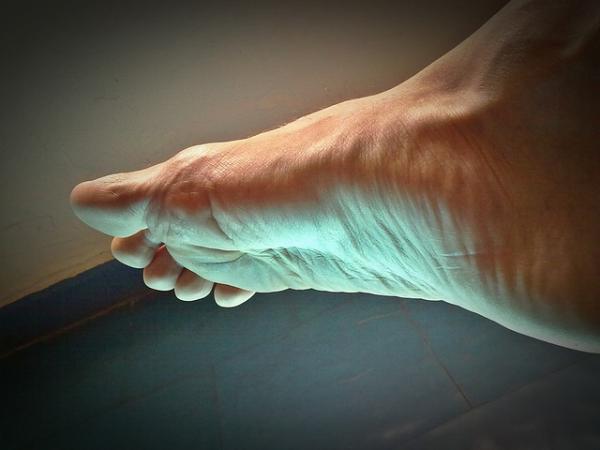Vascular surgeons have an intimate acquaintance with diabetes and its complications. It seems to create a trifecta of problems, an accelerated obstruction of the small blood vessels supplying oxygen to tissue, suppression of the inflammatory response to infection, and a deadening of pain receptors making it difficult for patients and physicians to recognize infections and the body to respond. A small infection of a toe is often, like an ice burg, just the barest suggestion of the carnage in the depth of the foot. A new paper in Cell uncovers a linkage between pain reception and our immune system.
Pain is essential; it helps alert us that something is awry. Sensory receptors experience noxious stimuli and send messages to our brain that we interpret as pain. Just recently it has been discovered that at least one subtype of these sensors lies in close approximation to another group of cells, dendrites, that are necessary for an inflammatory response. These dendritic cells, in turn, activate T cells that mobilize an inflammatory response both to the specific area as well as the surrounding tissue where the noxious stimuli arose. While infectious metabolites can initiate the T cell response, it seems that pain receptors are both a necessary component and can initiate the inflammatory response on their own.
The scientific “proof” of this is elegant. First, scientists developed mice whose sensory receptors could be switched on by a particular light wavelength; they could be optogenically stimulation. When exposed to, in this case, blue light, mice with light-sensitive receptors mounted “a robust inflammatory response,” the control mice did not. And that robust response included all the usual inflammatory mediators one might expect in a cutaneous reaction to infection. They then went on to show that it was the release of peptides contained within the sensory nerves that elicited that very local response, but that the receptors’ messaging to the central nervous system was responsible for the additional response in the surrounding tissue.
These cutaneous pain receptors initiated a local response and acting like Paul Revere, through the reflex arc with the spine, immediately called for additional immunologic troops. This presents an intriguing possible linkage as to why there is a muted response of patients with diabetic neuropathy to infection. If pain receptors serve not only as an early warning system but also to initiate a response, diabetic neuropathy, where pain receptors are damaged, further inhibits the defense against infection. The absence of pain, as it turns out, fails to warn both the patient and the immune system. This gives an infection a head start in establishing itself and makes it more difficult for the patient to develop and the physician to recognize the characteristic findings of inflammation, redness, heat, swelling, and pain.
Does this improve our current diagnostic acumen? No, and that is unfortunate. But it should serve as a reminder to primary care physicians treating patients with diabetes that pain is not the only symptom to search for. I will leave it to an older physician, Sir Arthur Conan Doyle, to make my point.
Gregory (Scotland Yard detective): "Is there any other point to which you would wish to draw my attention?"
Holmes: "To the curious incident of the dog in the night-time."
Gregory: "The dog did nothing in the night-time."
Holmes: "That was the curious incident."
For patients with diabetes it is often just as necessary to search for numbness as it is to search for pain; because we now have more evidence of a physiologic linkage demonstrating how numbness may impede our defenses in more ways than as a simple warning.
Source: Cutaneous TRPV1+ Neurons Trigger Protective Innate Type 17 Anticipatory Immunity Cell DOI: 10.1016/j.cell.2019.06.022




